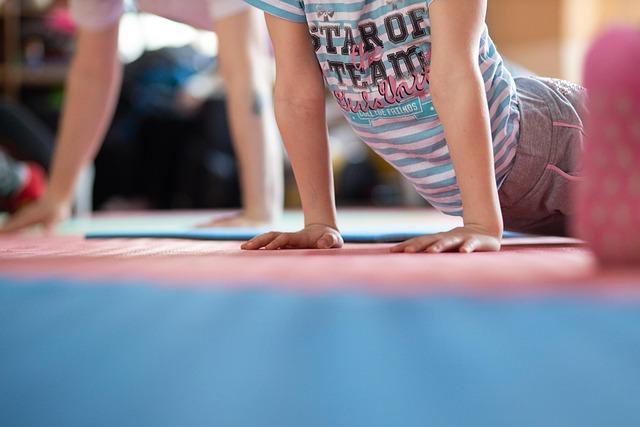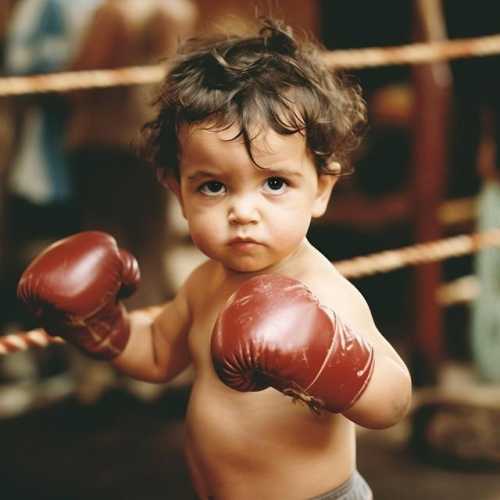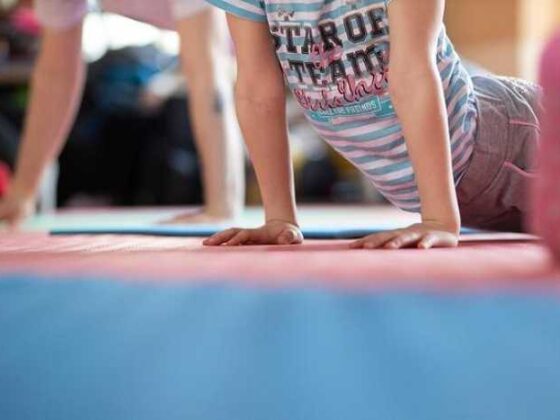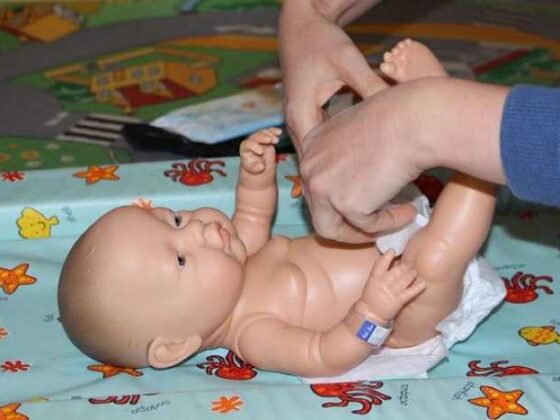Hey there, awesome parents and caregivers! Welcoming a tiny human into teh world is an exciting adventure filled with giggles, sleepless nights, and lots of learning (for both of you!). If you’re looking to turn those precious early days into a joyful journey of discovery, you’re in the right place. In this post, we’re diving into ”Baby Training 101: Fun Tips for Happy Little Learners” – because teaching your baby doesn’t have to be a chore. With a sprinkle of play, a dash of patience, and a whole lot of heart, you’ll be amazed at how quickly your little one starts exploring, understanding, and smiling their way through new skills. Ready to make learning fun? let’s jump in!
Choosing the Right Toys to Spark Your Baby’s Curiosity
When picking toys for your little explorer, look beyond flashy lights and loud noises. Simple, open-ended toys like stacking cups, wooden blocks, and soft fabric books invite babies to experiment and learn at their own pace.These toys encourage problem-solving and fine motor skills by letting your baby discover how things work through touch, feel, and trial. Remember, the best toys don’t always have to be “baby-specific” - everyday household items such as measuring spoons or a set of colorful scarves can become magical tools for discovery.
To keep the playtime engaging and developmentally rich, rotate toys regularly, mixing textures, shapes, and colors. Below is a quick guide to toy features that support different sensory and cognitive skills:
| Feature | Why Baby Loves It | Benefit |
|---|---|---|
| Varied Textures | different feels keep touch interesting | Enhances sensory development |
| Bright Colors | Catches attention and stimulates vision | Improves focus and visual tracking |
| Easy to Grasp | Fits tiny hands perfectly | Builds fine motor skills |
Creating a Playful Routine That Boosts Learning and Joy
Building a playful routine for your little one isn’t just about keeping them entertained-it’s a gateway to spark curiosity and nurture brain development. Mixing in short bursts of creative play with comforting rituals helps babies feel secure while encouraging exploration. think of it as balancing fun and focus: from a silly dance session to a quiet storytime,these moments become the building blocks of joyful learning. Keep activities varied, use colorful toys, and don’t forget to add plenty of giggles-because a happy baby learns best!
To get started, create simple daily activities that offer both learning and laughs. Here are some ideas you can sprinkle throughout the day:
- Sing-Alongs: use songs with hand movements to build language and motor skills.
- Peekaboo Games: Teach object permanence while sharing smiles.
- texture Play: Let your baby explore soft blankets, bumpy toys, or squishy balls to boost sensory awareness.
- Mini Obstacle Courses: Encourage crawling or cruising by setting up cozy, safe stations around the room.
| Activity | Skill Boosted | Best Time |
|---|---|---|
| Singing Nursery Rhymes | Language & Memory | Morning |
| Peekaboo | social & Cognitive | Afternoon |
| Texture Play | Sensory Development | After Nap |
| Mini Obstacle Course | Motor Skills | Before Dinner |

Simple Songs and Games That Teach Big skills
Music and play are powerful tools for early development,and even the simplest songs or games can unlock amazing growth. Singing classic tunes like “Twinkle Twinkle Little Star” or playing peek-a-boo doesn’t just entertain your baby - it helps nurture language skills, social bonding, and emotional intelligence. these activities create a safe space where babies begin to understand rhythm, tone, and social cues. Bonus? Thay’re also fantastic for developing memory and attention span, laying the groundwork for future learning adventures.
Try incorporating daily moments filled with fun and interaction using easy games such as:
- Pat-a-cake: enhances motor coordination and rhythm recognition.
- Copycat sounds: Boosts auditory skills and early speech development.
- Colorful stacking: Encourages problem solving and fine motor control.
These playful routines help babies master big skills while keeping things light and joyful.
| Activity | Skills Targeted | Why It Works |
|---|---|---|
| “Itsy Bitsy Spider” Song | Motor,Language | Hand motions build coordination; words teach rhythm |
| Stacking Blocks | Problem Solving,Fine Motor | Encourages focus and hand-eye coordination |
| Look & Find | Visual Perception,Memory | Turns observation into active learning |
Turning Everyday Moments into Learning Adventures
Imagine turning snack time into a color and texture adventure or bath time into a splashy science experiment! Everyday routines are packed with hidden opportunities to spark curiosity and encourage little minds to explore. For example, while feeding, you can introduce new words like soft, crunchy, or sweet, turning simple taste tests into vocabulary building moments. don’t forget about the power of observation-when your baby sees you sorting laundry, point out colors and shapes, or count socks together. It’s these tiny interactions that lay the groundwork for lifelong learning without needing special tools or setups.
to keep these moments playful and effective, try mixing in these fun hacks:
- Sing songs about what you’re doing to boost memory and language skills.
- Offer choices like picking between two toys to foster decision-making.
- Explore textures during playtime using household items like soft fabric or crunchy leaves.
Here’s a quick peek at how daily activities can double as mini-learning labs:
| Activity | learning Focus | Example |
|---|---|---|
| Mealtime | Sensory & Language | Describe flavors & textures |
| Getting Dressed | Colors & Motor Skills | Identify colors, practice buttoning |
| Walks Outside | Nature & Observation | Spot and name animals or plants |
Q&A
Q&A: Baby Training 101 – Fun Tips for Happy Little Learners
Q: What exactly is baby training? Is it like teaching a puppy?
A: Haha, not quite! Baby training is all about helping your little one learn new skills-like sitting up, crawling, or even social play-in a gentle, fun way.It’s less about “training” and more about guiding little explorers as they figure out the world.
Q: When should I start baby training?
A: The “training” starts almost from day one! Even newborns are soaking up sights, sounds, and cuddles. But when it comes to specific skills like tummy time or simple games, starting around 2-3 months is perfect. Remember, it’s all about age-appropriate steps.
Q: How can I make baby training fun and engaging?
A: Think toys, laughter, silly songs, and lots of play. babies learn best when they’re happy and curious.Use colorful rattles, peek-a-boo, or sing little tunes. Smile a lot-their favorite teacher is YOU!
Q: What’s tummy time, and why is it so crucial?
A: Tummy time is when you lay your baby on their belly while they’re awake. It might sound simple, but it helps build neck, shoulder, and arm muscles-key for crawling and eventually walking. Make it fun by joining in or placing toys just out of reach.
Q: My baby gets frustrated easily during “training” sessions. What can I do?
A: Totally normal! Babies have tiny attention spans and big feelings. Keep sessions short, watch their cues, and switch activities if they get upset. Patience is key-celebrate little wins and always end on a positive note.Q: Should I follow a strict schedule for training activities?
A: Nope, adaptability wins here. It’s great to have routines,but babies thrive on responsive parenting.If your little one is tired or cranky, it’s okay to skip or adjust the activity. The goal? Keeping learning happy and pressure-free.
Q: How do I know if my baby is hitting developmental milestones?
A: Every baby is unique, but you’ll usually see milestones like rolling over (around 4-6 months), sitting up, babbling, and crawling at various ages. If you’re ever concerned, chatting with your pediatrician can give you peace of mind.
Q: Can siblings or other family members help with baby training?
A: Absolutely! Siblings and family bring extra love, fun, and social learning. Just make sure everyone’s on board with gentle, supportive play. Babies love watching and interacting with lots of familiar faces.
Q: What’s the best mindset for parents during baby training?
A: Keep it light and joyful. Celebrate curiosity, not perfection. remember, babies learn at their own pace, and your loving presence is the biggest boost. Training is less about ticking boxes and more about building connections.
Q: Any quick tips for a tired parent juggling baby training?
A: You’re a rockstar already! try short, simple activities sprinkled throughout the day. Use everyday moments-like bath time or diaper changes-as learning opportunities. And don’t forget to take care of yourself, too!
Got more questions or funny baby training stories? Drop them in the comments - we’re all in this parenting adventure together! 🌟👶
Closing Remarks
And there you have it-your quick guide to making baby training a joyful adventure for both you and your little one! Remember, the key is patience, playfulness, and plenty of praise. With these fun tips up your sleeve, you’re all set to watch your happy little learner grow, explore, and surprise you every step of the way.So take a deep breath, enjoy the messy moments, and celebrate those tiny victories-they really do add up. Happy training!











